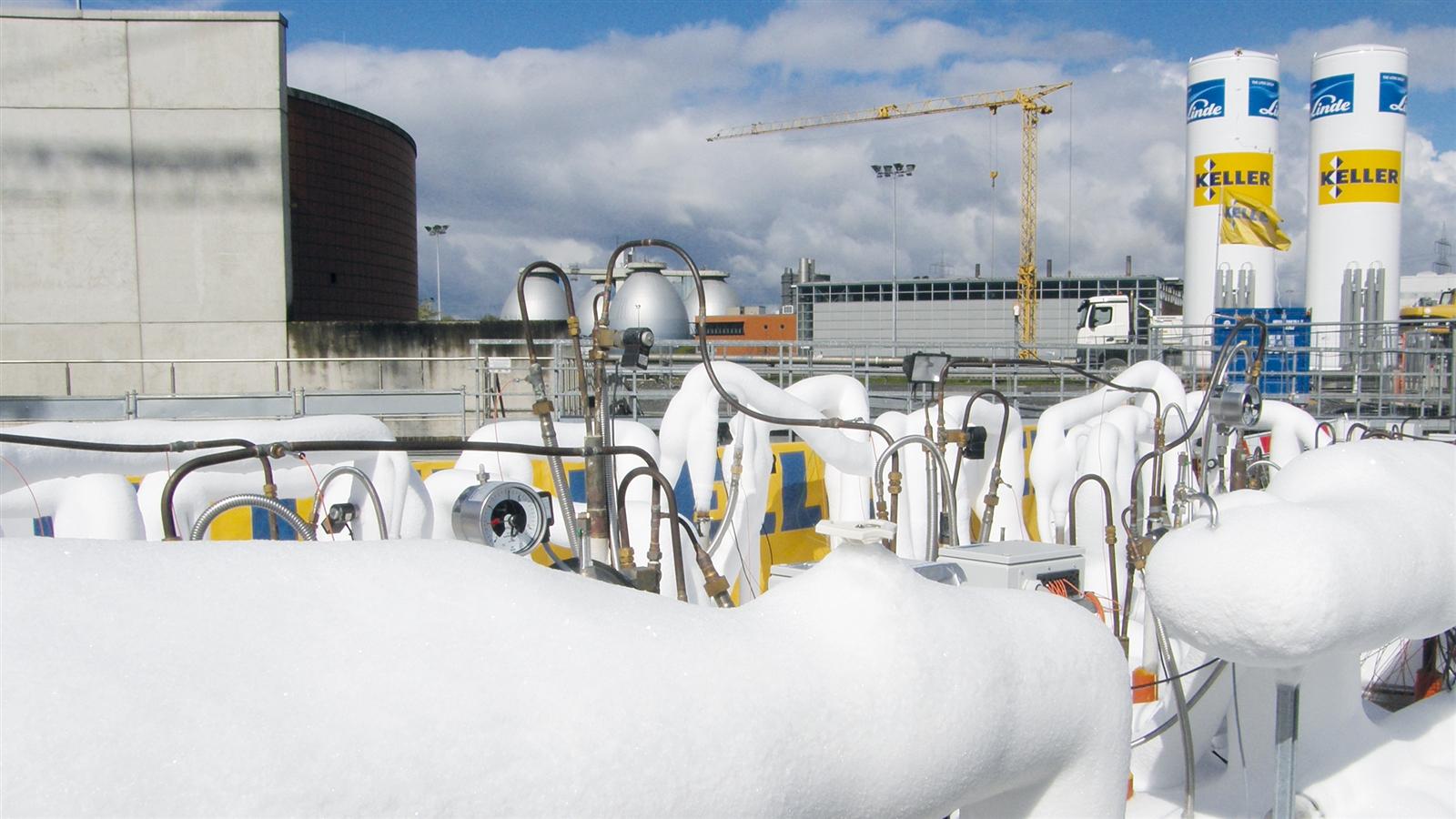Frozen Soil: Ground Freezing Helps with Difficult Conditions
Ground freezing works in much the same way as an ice freezer – double-walled pipes known as freezing lances are lowered into the ground to carry refrigerants through the soil at the site. A pump forces the refrigerant downwards through the inner pipe for it to rise back up again in the outer pipe, drawing heat from the surrounding soil. This results in frozen cylindrical forms around each freezing lance. The longer the process continues, the larger these frozen cylinders become, increasing stability in the loose soil while making it more impervious to water.
Ground freezing is an environmentally friendly technique: The refrigerant remains within an entirely closed system and no chemicals are injected into the ground. Afterwards the soil is left to thaw out without leaving a trace.
Ground Freezing Methods
Two versions are used depending on the situation. Planners will usually use a specialised brine solution at temperatures down to -35°C; if the soil needs to be frozen very quickly, liquid nitrogen is used as a refrigerant instead. This especially applies in tight soils in danger of expansion due to the formation of ice crystals. Liquid nitrogen can reach temperatures down to -196°C and prevents heterogeneous ice formation. However, liquid nitrogen turns into nitrogen gas on its way through the lance, requiring a continuous nitrogen supply instead of cooling equipment at ground level – a process that can become very expensive if used for extended periods. Both types of process are sometimes used in combination by first snap-freezing the soil using liquid nitrogen, then keeping the soil frozen using the more inexpensive brine method.
Did you know?
Artificial ground freezing is a construction technique that is used in the construction of shafts, mines and tunnels to provide temporary ground support and groundwater control when other conventional methods such as dewatering, shoring and grouting or soil mixing are not feasible. The freezing process uses an entirely closed system; there are no chemicals injected into the ground. The refrigerated coolant extracts heat from the ground, converting the soil pore water to ice resulting in an extremely strong, impermeable material. This method of ground improvement offers many advantages to the underground construction and mining industries.










